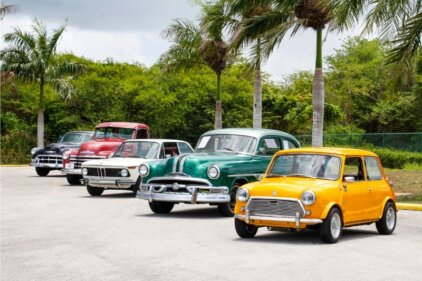With so many options available, it can be difficult to determine which one is the best fit for your needs and skill level. In this essential guide, We will walk you through the process of selecting the perfect beginner motorcycle. Whether you’re looking for a bike that is easy to handle, offers great fuel efficiency, or provides a comfortable riding position, this guide has got you covered.
Factors to consider when choosing a beginner motorcycle
When it comes to selecting a beginner motorcycle, there are several important factors to keep in mind. First and foremost, consider your level of experience. Are you a complete novice or do you have some prior riding experience? This will help determine the type of bike that is suitable for you. Additionally, think about the purpose of your motorcycle. Will you be using it primarily for commuting, weekend rides, or long-distance touring? Understanding your riding goals will assist in narrowing down your options.
Another crucial factor to consider is the weight and size of the motorcycle. As a beginner, it is advisable to start with a bike that is lightweight and easy to maneuver. This will boost your confidence and make learning to ride a more enjoyable experience. Additionally, take into account the seat height. You should be able to comfortably reach the ground with both feet while seated on the motorcycle. Lastly, think about the maintenance requirements and cost associated with the bike. Opting for a reliable and affordable model will help you save both time and money in the long run.
Best beginner motorcycles for new riders – Honda CB300R, Yamaha YZF-R3, Kawasaki Ninja 400
Now that you have a clear understanding of the factors to consider, let’s explore some of the best beginner motorcycles available in the market. The Honda CB300R is an excellent choice for new riders. With its lightweight design, nimble handling, and user-friendly features, this bike is perfect for those just starting out. It also offers a comfortable riding position and impressive fuel efficiency, making it ideal for daily commuting.
Another great option is the Yamaha YZF-R3. This sporty bike not only looks sleek but also delivers a smooth and responsive ride. Equipped with a powerful engine and advanced braking system, the YZF-R3 offers excellent performance and safety. Whether you’re cruising on the highway or tackling twisty roads, this motorcycle will provide an exhilarating experience while still being beginner-friendly.
For those seeking a bit more power, the Kawasaki Ninja 400 is a fantastic choice. With its sporty looks and impressive performance, this bike is sure to turn heads. The Ninja 400 features a lightweight chassis, making it easy to handle for beginners. It also offers a comfortable riding position and a smooth power delivery, making it suitable for both daily commutes and weekend adventures.
Features to look for in a beginner motorcycle
When choosing a beginner motorcycle, it’s important to consider the features that will enhance your riding experience. One key feature to look for is an anti-lock braking system (ABS). ABS helps prevent the wheels from locking up during sudden braking, reducing the risk of skidding and maintaining control of the motorcycle. This is especially crucial for new riders who may not have mastered emergency braking techniques.
Another feature to consider is fuel efficiency. Beginner motorcycles with good fuel efficiency will not only save you money at the pump but also allow for longer rides without needing to refuel. Additionally, look for a bike with a comfortable riding position. A relaxed seating position will reduce fatigue and make your rides more enjoyable, especially during longer trips.
Lastly, consider the availability and cost of spare parts. Opting for a motorcycle with readily available and affordable spare parts will ensure that maintenance and repairs are hassle-free and cost-effective. It’s always a good idea to do some research on the availability and cost of spare parts for the specific model you are interested in before making a purchase.
Safety gear for new riders
As a new rider, investing in proper safety gear is essential. A well-fitted helmet should be your top priority. Look for helmets that are certified by safety organizations such as the Department for Transport (DFT) or the European Union (ECE). Additionally, invest in a good pair of riding gloves, a sturdy jacket, pants, and boots. These items will provide protection against abrasions, impact, and weather conditions.
It’s also worth considering additional safety accessories such as a high-visibility vest, reflective stickers, and a back protector. These accessories will increase your visibility on the road, making you more noticeable to other drivers. Remember, safety should always be a priority when riding a motorcycle, regardless of your skill level.
Motorcycle training and licensing requirements
Before hitting the road on your new motorcycle, it’s crucial to obtain the necessary training and licensing. Depending on your location, the requirements may vary, but most countries have a specific process for obtaining a motorcycle license. This typically involves a combination of written exams, practical riding tests, and completing a motorcycle training course.
Enrolling in a motorcycle training course is highly recommended, even if it is not mandatory in your area. These courses provide valuable knowledge and skills that will help you become a safer and more confident rider. The instructors will teach you essential techniques, such as proper braking, cornering, and defensive riding strategies. By completing a training course, you will not only increase your chances of passing the licensing exams but also gain valuable experience and knowledge that will benefit you throughout your riding journey.
Tips for new riders
As a new rider, it’s important to approach motorcycling with caution and a willingness to learn. Here are some tips to help you get started on the right foot:
- Start with short rides in low-traffic areas to build your confidence and get comfortable with the bike.
- Practice essential skills such as braking, shifting gears, and turning in a controlled environment before venturing out on the road.
- Always ride within your limits and at a speed that is comfortable for you. Avoid succumbing to peer pressure or trying to keep up with more experienced riders.
- Be aware of your surroundings and anticipate potential hazards on the road. Stay focused and avoid distractions such as using your phone while riding.
- Regularly check and maintain your motorcycle to ensure it is in safe working condition. Pay attention to tire pressure, brake pads, and fluid levels.
- Stay visible to other road users by using your headlights, wearing bright-colored gear, and positioning yourself in the lane where you are most visible.
- Lastly, never underestimate the importance of wearing proper safety gear. Protecting yourself with a helmet, gloves, jacket, pants, and boots can significantly reduce the risk of injury in the event of an accident.
Maintenance and care for beginner motorcycles
Proper maintenance and care are vital to keep your beginner motorcycle running smoothly and ensure its longevity. Here are some essential maintenance tasks to keep in mind:
- Regularly check and maintain tire pressure. Underinflated or overinflated tires can affect handling, traction, and fuel efficiency.
- Inspect the brakes regularly and replace brake pads as needed. Squeaky or spongy brakes may indicate that they need to be serviced or replaced.
- Keep the chain clean and lubricated. A well-lubricated chain will improve performance and prevent premature wear.
- Change the oil and oil filter at regular intervals as recommended by the manufacturer. Fresh oil will help keep the engine running smoothly and prolong its life.
- Clean and lubricate the control cables. These cables control various aspects of the motorcycle, such as throttle and clutch operation. Regular maintenance will ensure smooth and responsive control.
- Keep an eye on fluid levels, including coolant, brake fluid, and transmission fluid. Low levels can lead to performance issues and potential damage to the motorcycle.
- Lastly, store your motorcycle in a safe and dry environment when not in use. Avoid exposing it to extreme temperatures or harsh weather conditions.
Budget-friendly options for beginner motorcycles
If you’re on a tight budget, there are still plenty of excellent beginner motorcycles available at affordable prices. Consider purchasing a used motorcycle from a reputable dealer or private seller. Used bikes can offer great value for money and may already have some accessories or modifications that can save you additional costs.
Another option is to look for entry-level models from reputable manufacturers. These motorcycles are specifically designed with beginner riders in mind and often come with a lower price tag. While they may not have all the bells and whistles of more expensive models, they still provide a safe and enjoyable riding experience.
Lastly, consider financing options if purchasing a new motorcycle is your preference. Many manufacturers offer financing plans with low-interest rates and flexible repayment terms. This allows you to spread out the cost of the motorcycle over time, making it more affordable and manageable within your budget.
Conclusion
Choosing the best beginner motorcycle is an important decision that can greatly impact your riding experience. By considering factors such as your experience level, riding goals, and budget, you can narrow down your options and find the perfect bike for you. Remember to prioritize safety by investing in proper gear and completing the necessary training and licensing requirements. With the right motorcycle and the right mindset, you’ll be well on your way to enjoying the freedom and thrill of the open road. Happy riding!





